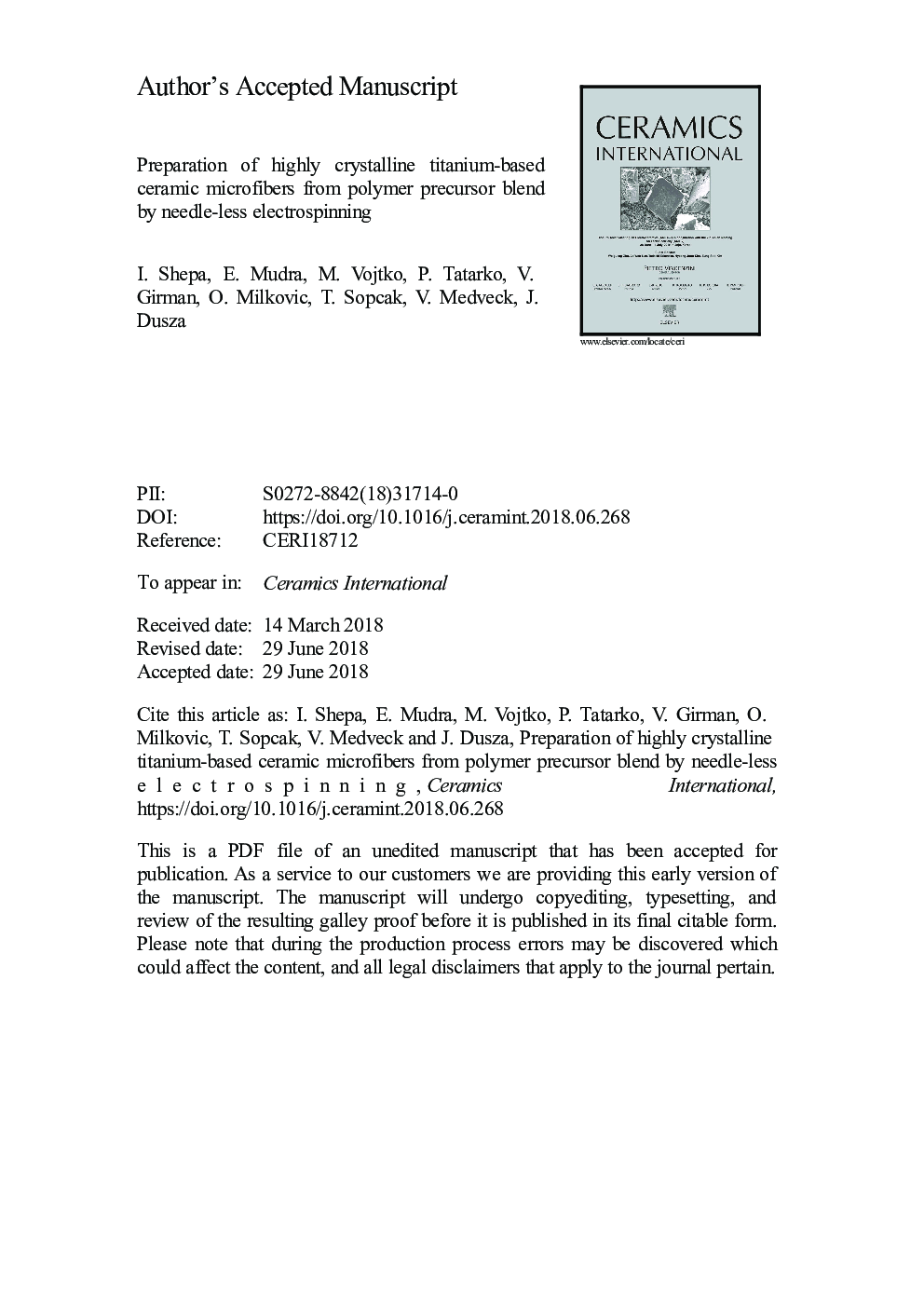| Article ID | Journal | Published Year | Pages | File Type |
|---|---|---|---|---|
| 8948468 | Ceramics International | 2018 | 39 Pages |
Abstract
The aim of the present contribution is to study the influence of the post-spinning heat - treatment of single TiO2/PVP precursor fibers on the properties and morphology of the final titanium-based microfibers. The post-spinning treatment conditions were: calcination in air at 450-600â¯Â°C and pyrolysis in argon at 1000-1700â¯Â°C. Calcination resulted in a production of anatase-rich and pure rutile fibers. The use of an alternative sintering method, the low-temperature plasma treatment, led to the crystallization of the composite Magnéli phases/polymer fibers. As a result of the same one precursor, pyrolysis at 1000â¯Â°C, the Carbon/TiO2 composite fibers were obtained. Rising the treatment temperature in inert atmosphere led to the formation of the titanium carbide fibers. The formation process and all the obtained products were characterized by differential scanning calorimetry accompanied with thermogravimetric analysis (DSC/TGA), scanning and transmission electron microscopy (SEM, TEM), X-ray diffraction (XRD), and image analysis techniques.
Related Topics
Physical Sciences and Engineering
Materials Science
Ceramics and Composites
Authors
I. Shepa, E. Mudra, M. Vojtko, P. Tatarko, V. Girman, O. Milkovic, T. Sopcak, V. Medvecka, J. Dusza,
